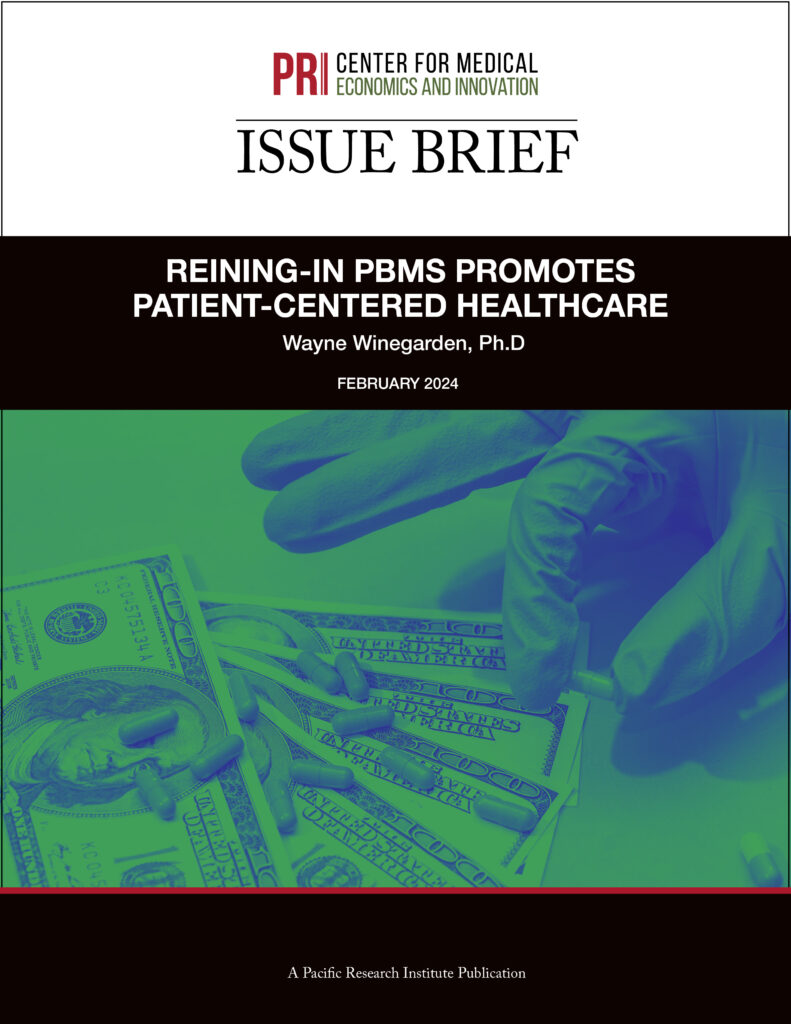NEW BRIEF: End Anti-Market Distortions in Current PBM System Would Lower Patient Costs, Increase Access to Life-Saving Drugs
SACRAMENTO – Fixing the current broken system that incentivizes pharmacy benefit managers (PBMs) to enact policies that benefit themselves and insurers at the expense of patients would lead to lower patient drug costs, finds a new brief released today by the Center for Medical Economics and Innovation at the nonpartisan Pacific Research Institute.
“The current system incentivizes PBMs to implement policies that benefit insurers and themselves, while making drugs less affordable and available,” said Dr. Wayne Winegarden, director of PRI’s Center for Medical Economics and Innovation. “That’s why Congress must eliminate anti-market and anti-patient incentives and create a patient-centered healthcare system.”
PBMs earn revenues from fees charged to pharmacies and plans, a percentage of negotiated discounts with manufacturers, and fees tied to the drug’s list price. They earn more money when drug list prices are high, which has encouraged a rise in list prices in recent years.
Using a hypothetical drug whose list and net prices were both $100 in 2013, Winegarden calculates that list prices rose 87.4 percent over ten years to $187.43 in 2023, while net prices declined to $91.66. The price difference shows negotiated discounts and concessions.
Insurer costs are more controlled because they are linked to less expensive net prices. However, patient costs are rising because their out-of-pocket costs are based on the inflated list prices. Winegarden calculates that a patient with 20 percent co-insurance would have paid $20 per prescription in 2013, but $37.49 per prescription in 2023. This rise is most problematic for patients taking more expensive, innovative drugs.
Isolating the drug pricing problem to PBMs, Winegarden documents that prescription drug expenditures as a share of total healthcare expenditures have been falling over the past two decades. It was 9.1 percent in 2022, which is lower than the two-decade average of 9.6 percent. Manufacturer profits are based on net prices, indicating they have been receiving less money for drugs recently.
Congress is currently considering several PBM reform measures. Winegarden argues that reforms to de-link PBM compensation and the size of negotiated discounts, increasing price transparency, and eliminating clawbacks charged to pharmacies long after the drug sale has been made would benefit patients.
He rejects the arguments of reform critics, who say eliminating PBM abuses would push the U.S. healthcare system “one step closer” to a socialized system.
“The opposite of socialized healthcare, PBM reform would create a simple, transparent pricing system promoting the interests of patients, increasing drug affordability, and realizing higher quality care,” argues Winegarden. “This would end the current problem where patients face higher out-of-pocket costs and limited access to medication – a common experience for patients in the socialized healthcare systems of Canada and Europe.”

